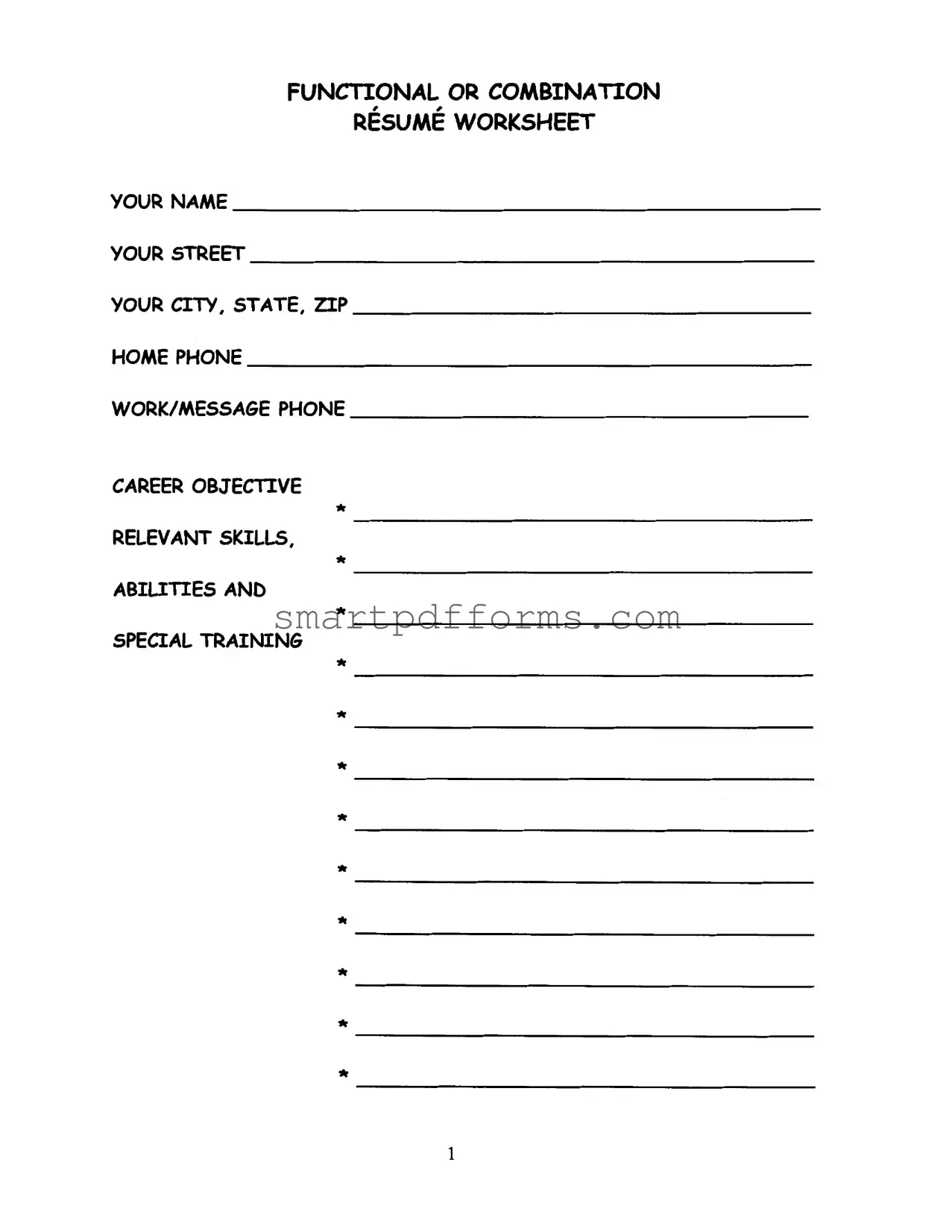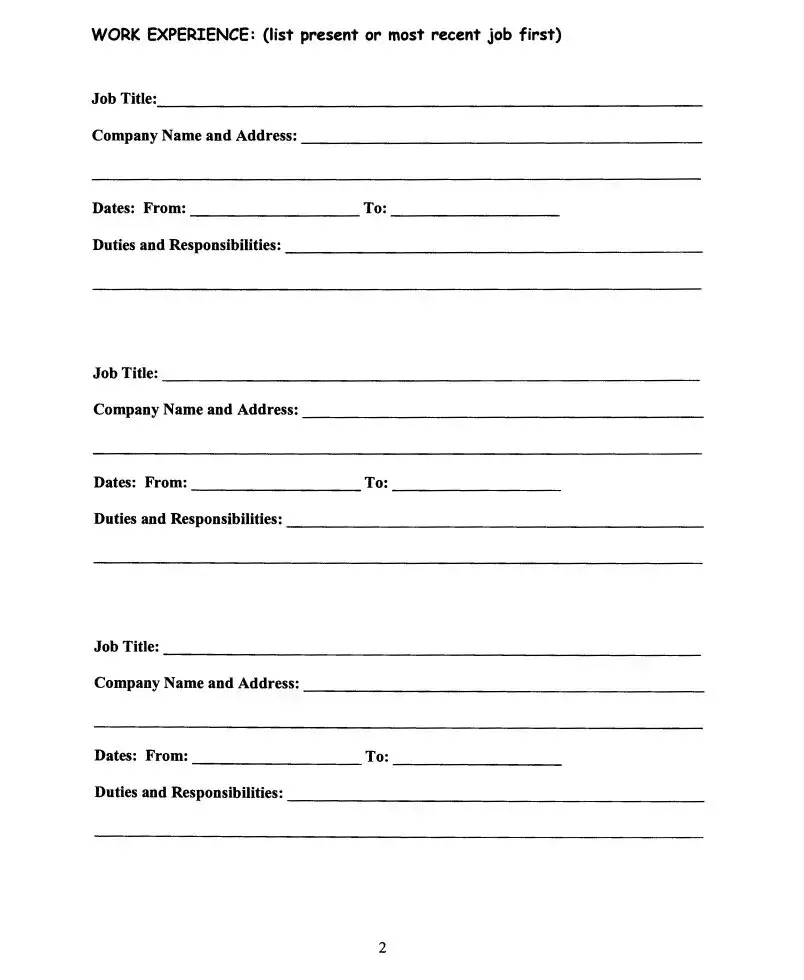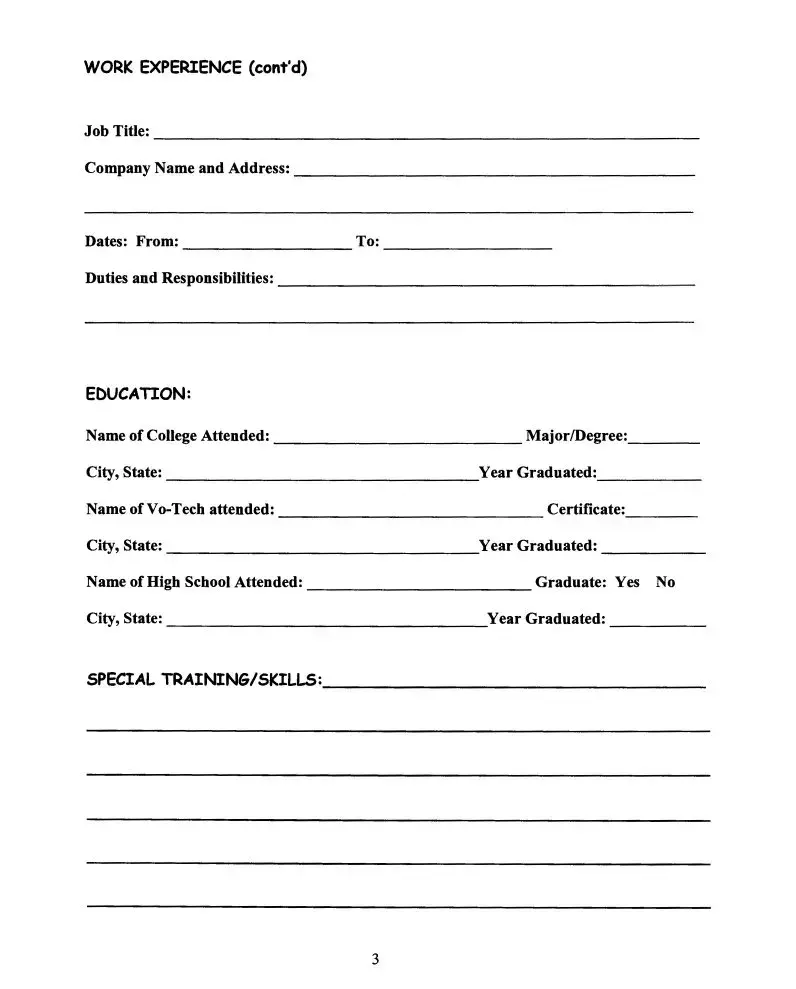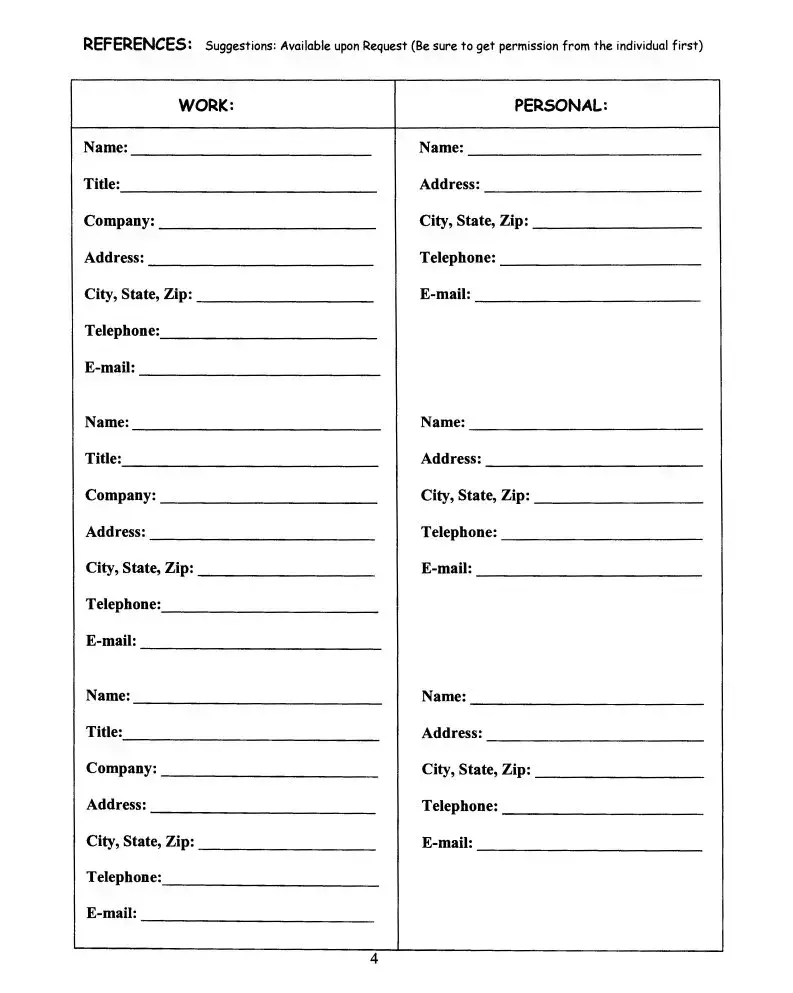Blank Fill In The Resume Worksheet PDF Template
The Fill In The Resume Worksheet form is designed as a structured template to guide individuals in creating a detailed resume that encompasses various sections, including personal information, career objective, relevant skills, work experience, education, special training/skills, and references. It provides an organized approach for presenting one’s professional background, whether it’s for a functional or combination resume. To ensure a comprehensive representation of your professional journey, click the button below to start filling out the form.
Make This Document Now




